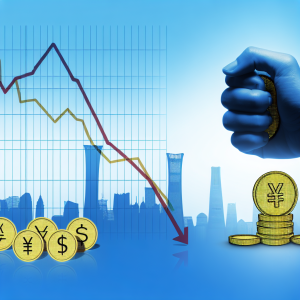Navigating the Crosscurrents: What China’s Latest PMI Data Means for Investors and Advisors
Recent economic signals from China’s manufacturing and service sectors underscore a complex landscape that savvy investors and financial advisors must decode to stay ahead. The latest Caixin Manufacturing PMI nudged above the expansion threshold at 50.4 in June, a modest improvement from May’s contraction reading of 48.3. Yet beneath this headline number lies a cautionary tale of persistent cost pressures, subdued hiring, and pricing challenges that could ripple through corporate profits and labor markets.
The Hidden Strain Behind the Numbers
Private sector firms are absorbing rising costs amid fierce competition, a dynamic that’s squeezing profit margins. Without fresh government subsidies or stimulus measures, companies might be forced to trim staffing to control fixed costs—an outcome that would exacerbate labor market pressures. East Asia Econ’s observation that firms remain “cautious with hiring” and continue to see “a fourth monthly reduction in average input costs” highlights a defensive posture rather than robust growth.
This scenario suggests a structural challenge: businesses are caught between managing cost inflation and competitive pricing pressures, which limits their ability to pass on costs to consumers. For investors, this means corporate earnings growth may remain subdued, especially in manufacturing-heavy sectors.
Market Reactions and What They Signal
The Hang Seng Index’s 1.09% drop to 23,955 reflects investor jitters over weaker-than-expected service sector performance and concerns about declining overseas demand. Meanwhile, Mainland indices showed mixed results—CSI 300 edged up 0.21% while the Shanghai Composite dipped 0.11%. These fluctuations reveal a market balancing optimism about potential Beijing stimulus against real-time economic headwinds.
Year-to-date, Mainland markets have posted modest gains: CSI 300 at +0.39% and Shanghai Composite at +2.92%. In contrast, the Hang Seng Index has surged an impressive 19.29%, fueled largely by Mainland investor inflows. This divergence underscores a key trend—Hong Kong’s market is increasingly benefiting from domestic capital, reflecting confidence in selective sectors despite broader uncertainties.
What Investors and Advisors Should Do Differently Now
-
Focus on Quality and Resilience: Given the ongoing cost pressures and cautious hiring, prioritize companies with strong balance sheets, pricing power, and operational efficiency. Sectors like technology and consumer staples with proven ability to navigate inflationary environments may offer safer harbors.
-
Monitor Policy Signals Closely: Beijing’s next moves on stimulus will be pivotal. While hopes for targeted support to the labor market and domestic consumption are high, investors should be prepared for a phased or cautious approach. Advisors should keep clients informed about policy developments and adjust risk exposures accordingly.
-
Diversify Geographically and Sectorally: The mixed performance across Mainland and Hong Kong markets suggests that diversification remains crucial. Investors should consider balancing exposure between growth-oriented tech stocks in Mainland China and more defensive sectors in Hong Kong.
-
Leverage Data Beyond Headlines: The modest PMI uptick masks underlying fragilities. Advisors should dig into sub-indices like input costs, employment, and export orders to get a nuanced view of economic momentum. For example, falling new export orders point to external demand challenges that could worsen if global trade tensions persist.
Looking Ahead: What’s Next?
With global inflation pressures and geopolitical uncertainties still in play, China’s path to sustained economic recovery is likely to be uneven. According to a recent report from the International Monetary Fund (IMF), China’s growth could moderate further if external demand weakens and policy stimulus is delayed. This scenario reinforces the need for investors to adopt a cautious yet opportunistic stance.
One actionable insight is to watch for early signs of policy shifts such as targeted subsidies for manufacturing or labor market support programs. These could create sector-specific opportunities, especially in industries critical to China’s strategic priorities like green energy, semiconductors, and advanced manufacturing.
Unique Insight: The Rise of Domestic Consumption as a Buffer
An emerging theme is China’s strategic pivot toward boosting domestic consumption to offset export volatility. Recent data shows that consumer spending in urban areas grew by 4.5% year-over-year in Q1 2024, a positive sign but still below pre-pandemic levels. Investors should consider companies positioned to capitalize on this trend—retail, healthcare, and digital services could outperform as domestic demand strengthens.
Final Takeaway
China’s economic indicators present a mixed bag—modest improvements shadowed by structural challenges. For investors and advisors, the key lies in discerning the subtle signals beneath headline numbers and positioning portfolios to weather short-term volatility while capturing long-term growth from China’s evolving economic landscape. Staying informed, flexible, and focused on quality will be the hallmarks of successful investment strategies in this dynamic environment.
Sources: East Asia Econ, Caixin PMI Reports, International Monetary Fund, Bloomberg Markets
Source: China Caixin Services PMI Dips, Profit Margins Squeezed—Will Beijing Act?

